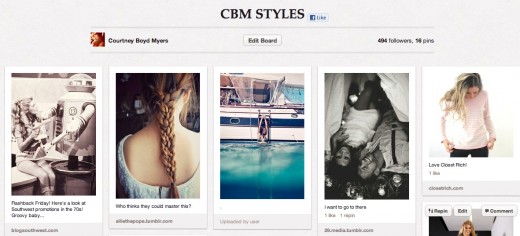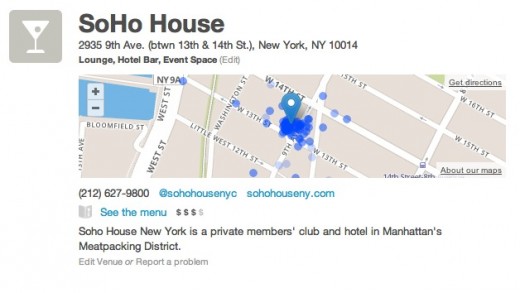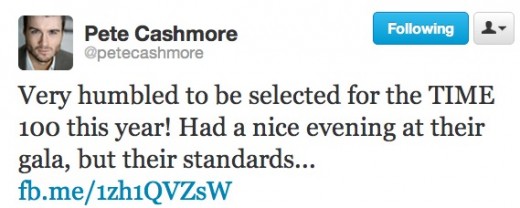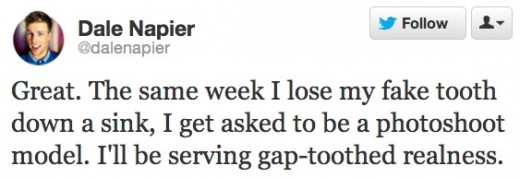
We live in a creator economy.
Facebook has 900 million users with 125 billion friend connections, uploading more than 300 million photos and liking and commenting on 3.2 billion things in a single day.
Meanwhile, Instagram has 30 million registered users, 1 billion photos uploaded (5 million photos per day), 575 likes per second, and 81 comments per second.
We all contribute to this firehose of content. When posting content, we all consciously or unconsciously apply a filter on what types of things we post about. You don’t want to post something that is boring or makes you look bad. In this sense, posting something on social media is inherently self-promotional. But you don’t want to be so blatantly self-promotional that you turn off your followers.
Enter the humblebrag.

- Subtly letting others now about how fantastic your life is while undercutting it with a bit of self-effacing humor or “woe is me” gloss.
“Uggggh just ate about fifteen piece of chocolate gotta learn to control myself when flying first class or they’ll cancel my modeling contract LOL”
- Humblebrag via Urban Dictionary: When you, usually consciously, try to get away with bragging about yourself by couching it in a phony show of humility.
This desire to humblebrag and be humblebragged to drives the viral content creation and consumption cycles of popular consumer internet app, which is why the most successful consumer Internet apps are simply ways for us to humblebrag and be humblebragged to.

1. Inherent human nature / behavior / psychology
Ego – who are you trying to impress? Why do we humblebrag?
Validation. We feel good when people compliment us. We feel good when we mean something to someone. We feel good when we create something of meaning and people appreciate it, and we feel bad when others criticize us. It is an innate human desire to be validated by others.
That said, there is a negative social stigma to coming right out and proclaiming that you are awesome. This usually comes across as self-serving, egotistical, and arrogant.
In fact, scientific studies have shown an inverse correlation between likeability and competence. Researchers have shown that the more modestly you portray yourself, the more likeable but less competent you’ll appear to others. While, the more competent you seem, the less likeable you are to others.
Therefore the humblebrag is an attempt to “accidentally” show that you’re competent while trying to maintain likeability. By trying to hide a brag behind false modesty, we hope to portray ourselves as awesome people with amazing lives while avoiding the social stigma of overtly bragging.

2. Driving interaction in an app
How is this related to building a successful consumer app? The goal is to build an app that allows the target user to make their life look effortlessly cool.
Effortless Cool
Underlying the humblebrag is an egocentric view to product design and user behavior. Where we choose to spend our time both online and offline defines our identities. Just like how our favorite bar represents the type of person we are, our favorite app allows the best of our personality to shine through. When the app does this effortlessly, we begin to believe that our lives are *actually* that awesome, because we selectively choose what parts of our lives to project to the world and onto ourselves.
Reality vs. Image – maximize the intersection
This ties into the idea of the aspirational self, where we all have this ideal in our minds of who we want to be. By putting our best foot forward, and sometimes faking it till you make it, you hope to one day achieve that ideal. The goal is that you hope to maximize the intersection between perception and reality.
Bidirectional nature of humblebrags
Humblebragging goes both ways. Because we humblebrag to get validation from others, it’s natural that we want to keep tabs on our friends’ lives through their humblebrags to see how our lives stack up.
So the best apps build this into a cycle: seeing other people’s cool lives makes us want to one-up them with our own humblebrags.
But the caveat is that you can’t build an app around a limited skill/commodity that you exclude the majority of people from the outset. Your product can’t be elitist by default. Rather, your goal is to turn the banal in people’s lives into great stories. People love stories.

3. Productizing around the behavior – actionable
What is the main form of content in your product?
Characteristics:
- Needs to be something that everyone has common in their lives
- Standard representation of something we do in our day to day, quotidian lives
- Then, make that thing much more interesting than it really is somehow
OR
- Make it known that you are doing something or there is something about you that you wouldn’t normally come right out and yell to the world
Pinterest is an interesting case study that demonstrates these points. Scrapbooking is an expression of the your identity. These are pieces of our lives that we find exciting, inspiring, beautiful, and interesting, and bundling them together in one place is a great way to showcase who they are. They embody our personal style, the products we like. We want to share them with other people, and it feels good when other people appreciate and like the collections we’ve made, because we feel validated.

Who is creating the content?
The most successful consumer apps have a personality. But that personality doesn’t come from the product itself; that personality is defined by the users who gravitate to that app to humblebrag.
Foursquare began in urban cities, and still has its greatest value in cities. The company went after the young urban professional who wants to try new places, restaurants, venues, and share that with their friends. Founder Dennis Crowley is often quoted saying that he wanted to make a game out of the city.
By tracking the places the user has gone, they not only have fun exploring their worlds like a video game, but also start to map out the type of person that they are. We are defined by the places we visit, and the places we visit are the best way to humblebrag about the cool person we are.
Understanding the psychology and motivations behind your target user is important to understand how to productize around that behavior.

Also important is understanding the type of user who is being humblebragged to, the user who is consuming the content. When building your product, you have to tap into that jealously derived from seeing how great the user’s friends’ lives are. The goal is that you drive engagement in 1) page views, and 2) viral growth in posting their own content to try to one-up their friends.
Facebook is famous for starting out as a way for students on college campuses to stalk photos of hot girls. This was crudely depicted in the movie The Social Network, but it demonstrated a key point that now anyone could see how amazing the lives of the attractive girls are.
Over time, this became the cornerstone on which Facebook’s engagement was driven by. The Photos product became a virtuous cycle where people would share and post photos to humblebrag and be humblebragged to.
 What is the feedback loop?
What is the feedback loop?
How are you measuring the performance of the humblebrag?: The new type of “vanity” metrics
- number of likes: low commitment
- number of friends: Facebook is infamous for being a social network where you’re Facebook friends with people you barely know or don’t know at all. But people collect Facebook friends as a vanity metric of their popularity. There has been some backlash to this, but there is no question that in the short term, this drove huge engagement on Facebook.
Foursquare – Feltron Report style
- mayorship: status symbol of being a “regular” at the coolest spots
- points, tips done, places you’ve been: an indicator of how social and outgoing you are
- who you’re there with: “I have so many cool friends.”
- number of followers, retweets, etc.
- number of likes, followers

Gamification
The same principles of humblebrag underly the motivations behind gamification. In a single-player mode, giving positive feedback to reward specific behaviors makes the user feel good. In a multi-player mode, exposing the achievements that make the user’s life look effortlessly amazing increase that person’s social status in the minds of their friends and peers.
Rather than blindly apply points and badges to your product because a popular app has them, I’d encourage you to think about how your specific implementation of gamification helps your target user feel good about themself.
Examples – putting it all together
- Instagram – “Putting a filter on any photo I take makes my life look like it’s straight out of a movie.”
- Foursquare – “I just checked in to [new hot restaurant with month long wait list / an amazing foreign country / McDonald’s (ironically)].”
- Twitter – The entire thing. There is even a Twitter account dedicated to retweeting our humblebrags.

Network Effects in Humblebragging Products
The most powerful humblebrags involve combinations of multiple humblebragging products. These are also known as network effects. If you post an amazing photo on Instagram, check in to Foursquare by geotagging that amazing photo, and also push that to Twitter and Facebook, the effect compounds many times over.
The humblebrag is a psychological framework to understand viral loops. It’s the seed to the viral growth, and the resulting effect is the viral feedback loop. With each additional network that you allow your user to share content to, you’re increasing distribution and viral nodes. The better you tap into this innate human behavior, this desire to showcase our personal identities and be validated for it, the more likely you are to achieve viral and explosive growth in your product.
Get the TNW newsletter
Get the most important tech news in your inbox each week.
 What is the feedback loop?
What is the feedback loop?



